Filter
My Wish List
![]() The Nitrogen Cycle
The Nitrogen Cycle
![]() Overview
Overview
Most people starting out in the reefing hobby don't always know the details behind cycling their tank and why it's important. When I first started, I had no idea what cycling entailed, just that it had to be done and there was bacteria involved in one way shape or form. I learned that knowing exactly what is happening in your tank chemically will make a world of a difference if you ever have to troubleshoot anything and will lead to a healthier tank in the long run.
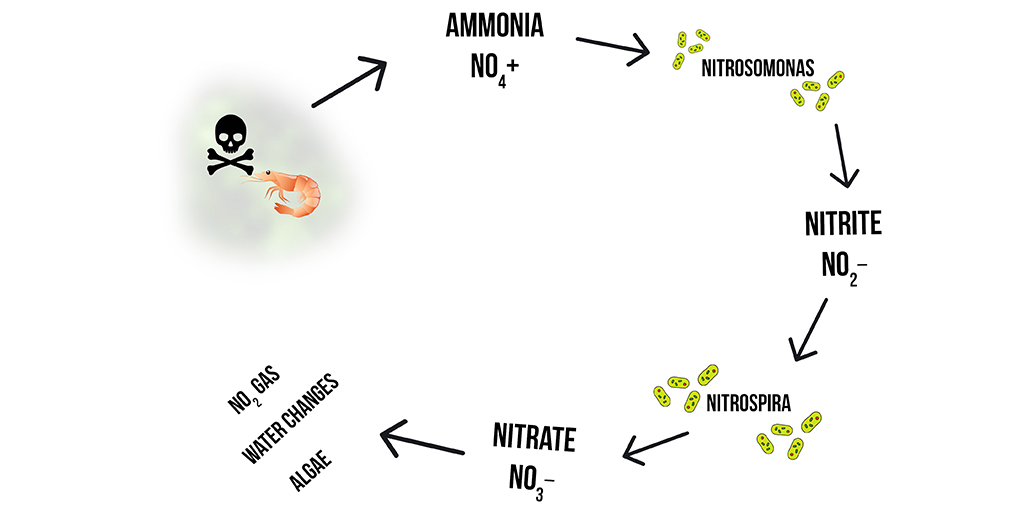
This is what the Nitrogen cycle looks like. It can be a bit overwhelming on first glance. The main goal of the nitrogen cycle is to process toxic ammonia and nitrite into the less toxic form nitrate.
![]() Where, When, and Why?
Where, When, and Why?
First, I want to discuss where the Nitrogen Cycle actually happens.
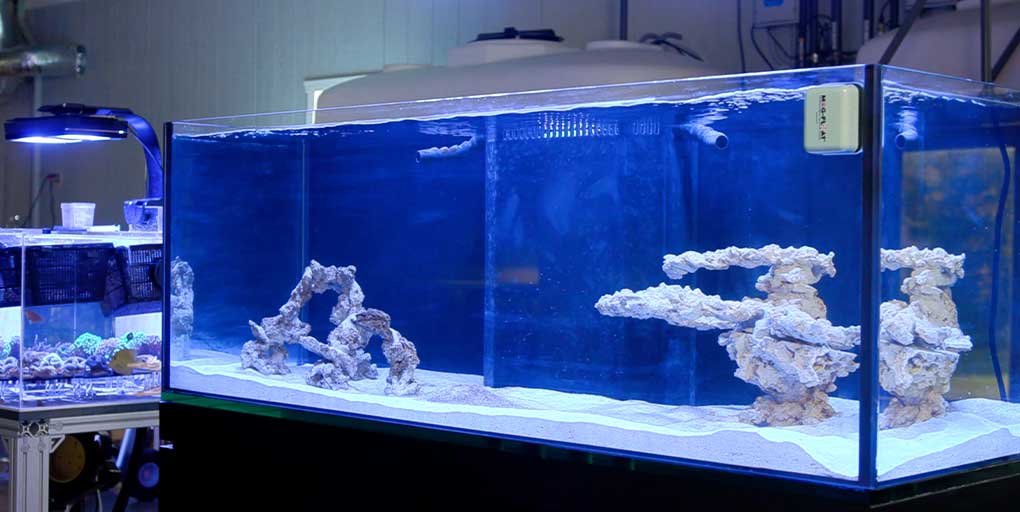
Most people associate the nitrogen cycle with bacteria in an aquatic environment, but the nitrogen cycle happens everywhere. If an animal dies in the woods, the process of its body breaking down contributes to the nitrogen cycle.
If we throw some fish food in the tank we want to cycle, the reason that we don’t have to add any nitrifying bacteria along with it is because they live everywhere on everything, which makes this process a little more simple. Although, some hobbyists like to add a bacterial supplement because it can speed up the process a bit.
Once the bacteria is in your tank they should be okay just floating around in an empty space right? Not quite.
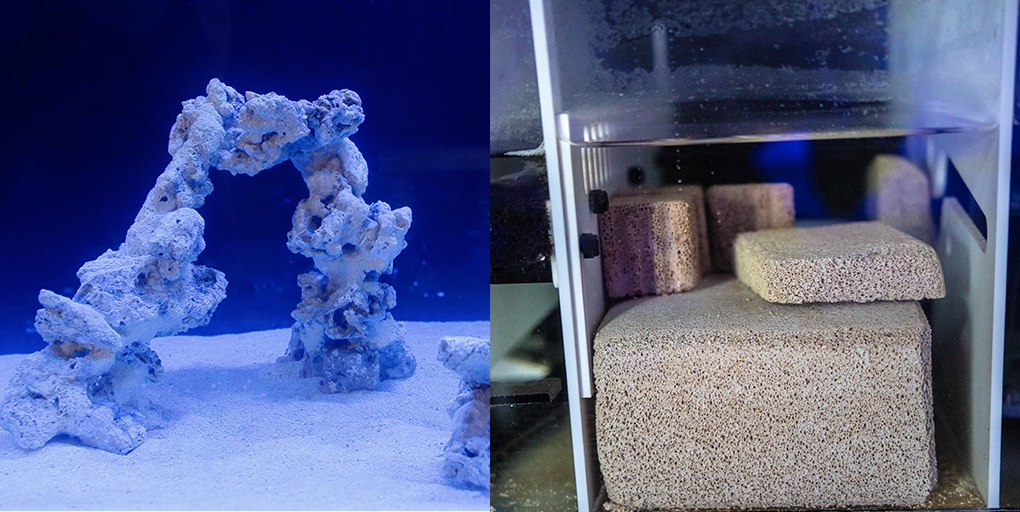
You can cycle a completely empty tank but it may not be ideal. In order for your tank to fully cycle, you need a LOT of bacteria, and that means surface area for it to grow on. An empty tank doesn’t offer a lot of surface area. That’s why adding in some rock or substrate to your tank, and some bio blocks into your sump will be a much better option than trying to cycle a bare tank.
Another common question a lot of people ask is “how long is this going to take” and that’s a valid question.
In total this process should take roughly 6 weeks, but that is a very grey area since factors such as whether bacteria supplements were added, the water temperature and salinity can play a part in how fast your tank actually cycles. 6 weeks is the general time frame for most tanks.
![]() Introducing Bacteria
Introducing Bacteria
To start off this cycle, and actually get the bacteria needed into the tank, we need to introduce some waste products.
There’s 2 main ways you can introduce bacteria into your tank to start this process and that is either buying cultures of beneficial bacteria from your local LFS or you can just toss some fish food in there and let it break down and attract bacteria that way.
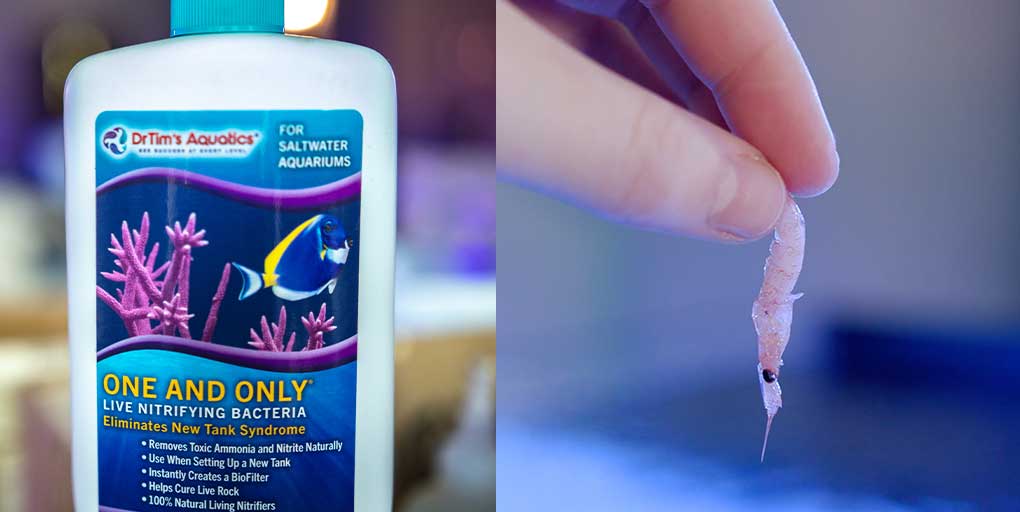
We ended up going with the latter because it is a simpler process since we have to go around feeding all the fish in the building anyway.
One thing to remember, is we want to feed a small, steady amount to the tank. The cycle involves different types of bacteria. The bacteria strain that converts ammonia to nitrite is not the same kind that turns nitrite to nitrate.
What complicates things is that the byproducts of certain bacteria are toxic to other types that are needed later in the cycle. So don’t put a bunch of waste into your tank at once and hope for the best, because it can be hard for other elements of the cycle to cope with the high amounts of ammonia. This could derail the nitrogen cycling process.
Feed little bits everyday until you start noticing nitrites form, then let everything run its course.
We want to to see ammonia levels will drop, but if nitrite levels spike off the charts that’s not a great sign. We want to take it slow so the bacteria that oxidizes nitrite to nitrate has a chance to colonize.
So that's the general overview. Let's talk in little more depth of the individual stages of the cycle.
![]() Ammonia
Ammonia

The first stage involves processing ammonia into nitrite.
Once food or waste gets into the tank and breaks down, it releases hydrogen nitride, or ammonia, into the system. Ammonia is incredibly toxic to fish and corals. Ammonia can’t be allowed to persist in our aquariums so we need bacteria present to get rid of it, or else you can say bye to all the organisms you actually want to keep alive and paid good money for.
The bacteria that grows in the water when ammonia is present is called Nitrosomonas. They take that ammonia and oxidize it thus turning it into Nitrite.
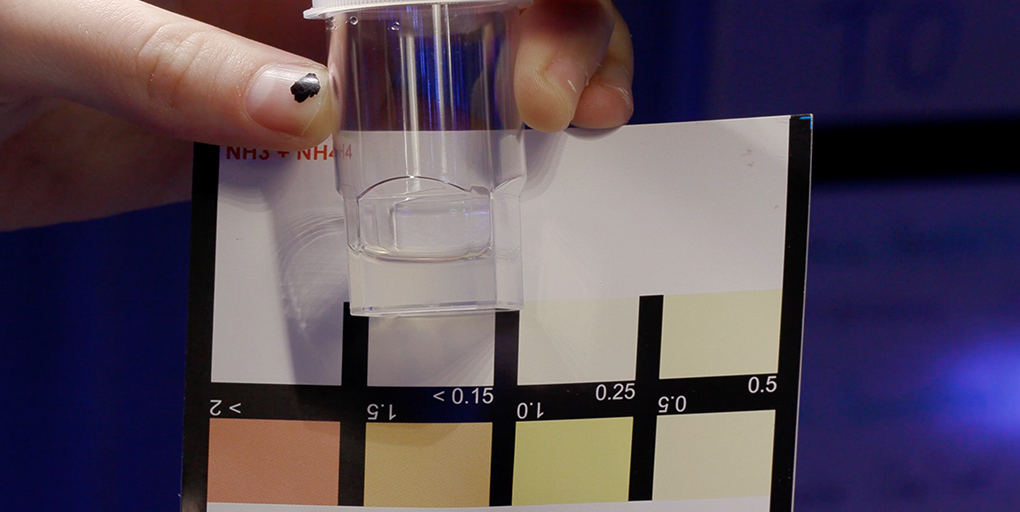
If you’re keeping track of your tank’s ammonia and nitrite levels during this process, you’ll notice when this happens. Once those Nitrosomonas bacteria start to reproduce, the levels of ammonia in the tank will stop climbing and begin to fall off. At the same time your nitrite levels will begin to rise.
The next step is the Nitrite to Nitrate conversion.
![]() Nitrite
Nitrite

After the oxidation of ammonia you’re left with nitrite, right? Well, this is ALSO poisonous to fish and coral, so what happens now?
Well luckily there are two types of bacteria in the Nitrogen Cycle process in saltwater aquariums. We already talked about Nitrosomonas bacteria, but the bacteria that help in the oxidation of Nitrite are Nitrospira bacteria.
If you have done a little bit of research into this process already you may read that the bacteria is ACTUALLY Nitrobacter. Nitrobacter does break down nitrite into nitrate, but only in really high ammonia systems, not most saltwater tanks.
These Nitrospira bacteria colonize the tank because they live off of the waste produced by the Nitrosomonas bacteria (AKA Nitrite).
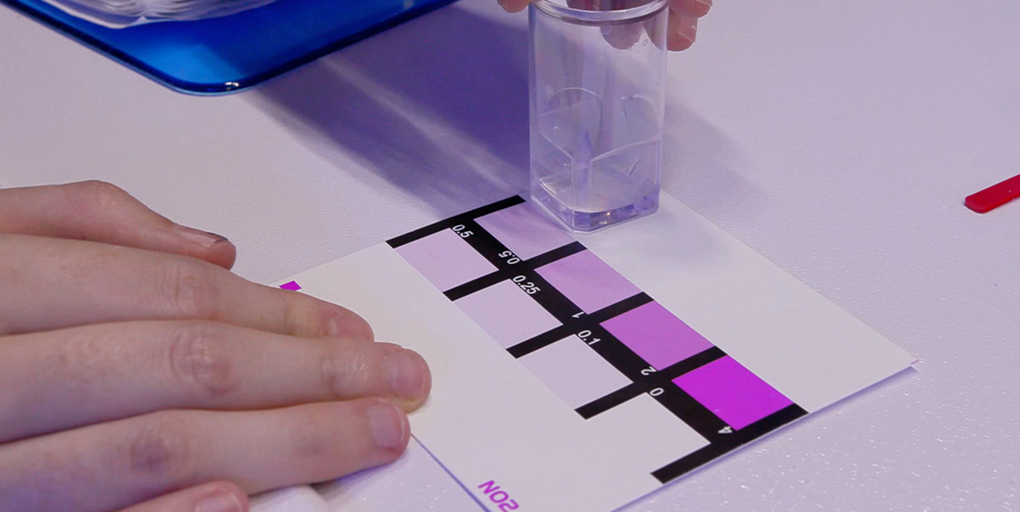
The Nitrospira end up turning Nitrite into Nitrate through that same process of oxidation. Again, if you are testing your tank every day or every other day you’ll notice when this happens. Your nitrite levels will fall and level off and your nitrate levels will start to climb.
![]() Nitrate
Nitrate
So now that our Nitrite levels have gone down and we now have a good amount of nitrate in the system along with the bacteria to keep this cycle going. However, high amounts of nitrate can still be bad for your system.
It isn’t SUPER toxic, but depending on the kind of corals you want to put in your tank, you will want to try and keep nitrates around 5-20ppm. Corals such as Acropora that appreciate low nitrates to achieve bright coloration, should be kept around 5ppm. Corals that need a higher nutrient level, like most LPS, will benefit from lightly elevated nitrates should be kept at around 10-20ppm.
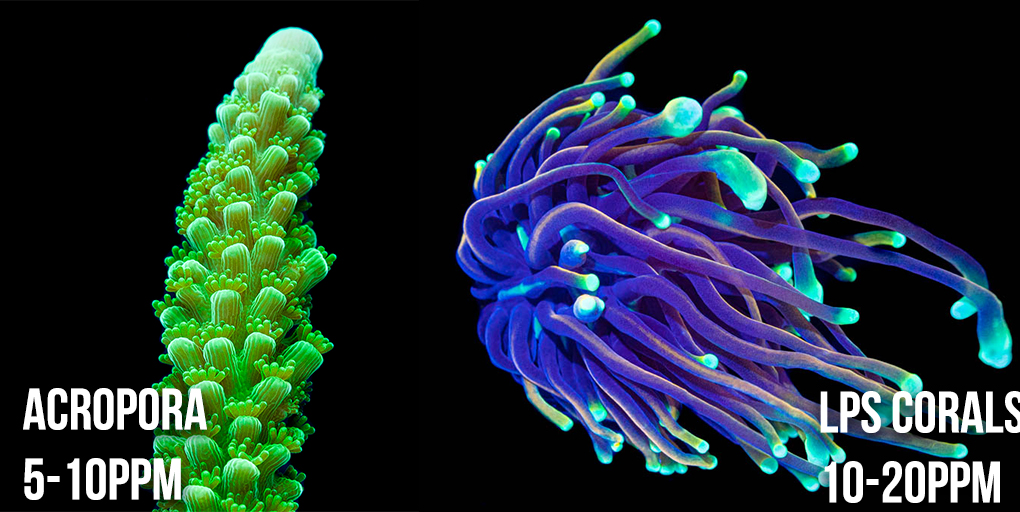
Technically, we’re now in a good spot but I still want to take things a little slow when stocking the tank with fish and corals. Once my tank gets to where ammonia and nitrite levels are basically zero and the nitrate levels are steady, I plan to introduce some herbivorous fish, but hold off on coral additions for a little while longer.
Why? Simple answer is, algae loves nitrates, and now that nitrates have entered the chat, I’m expecting an algae bloom and don’t want that covering my corals.
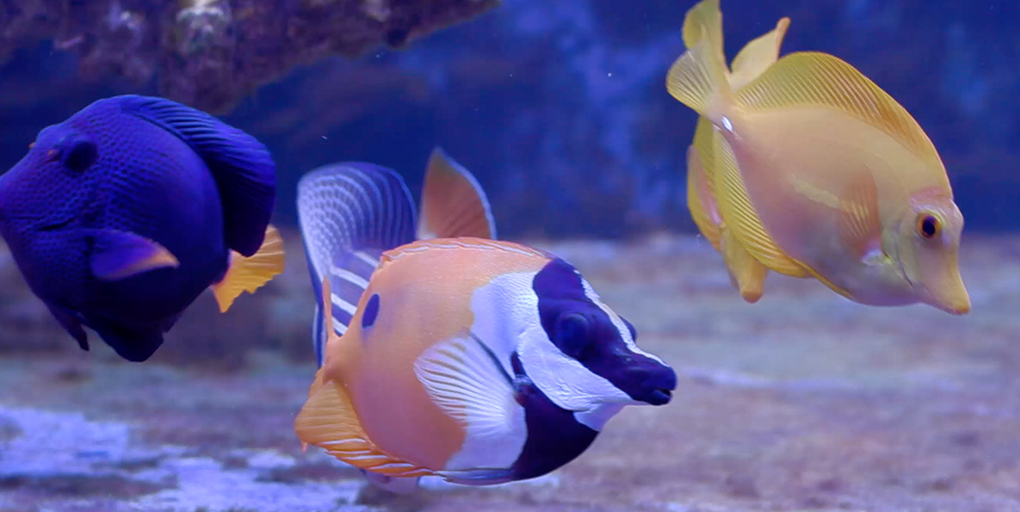
Adding in some herbivores to do some landscaping before the corals arrive will help a lot. Good fish for this job would be, tangs, fox faces, algae blennies. Inverts such as snails, and some emerald crabs are good for this job too.
Once I’m confident that the algae isn’t going to explode, I’ll start adding corals.
![]() Most Common Nitrogen Cycle Problems
Most Common Nitrogen Cycle Problems
Now that we have covered the nitrogen cycle itself, let’s use that information to solve some of the most common problems that we see in our tanks. Starting off, our first 2 issues kind of go together.
1. Nutrients are too high
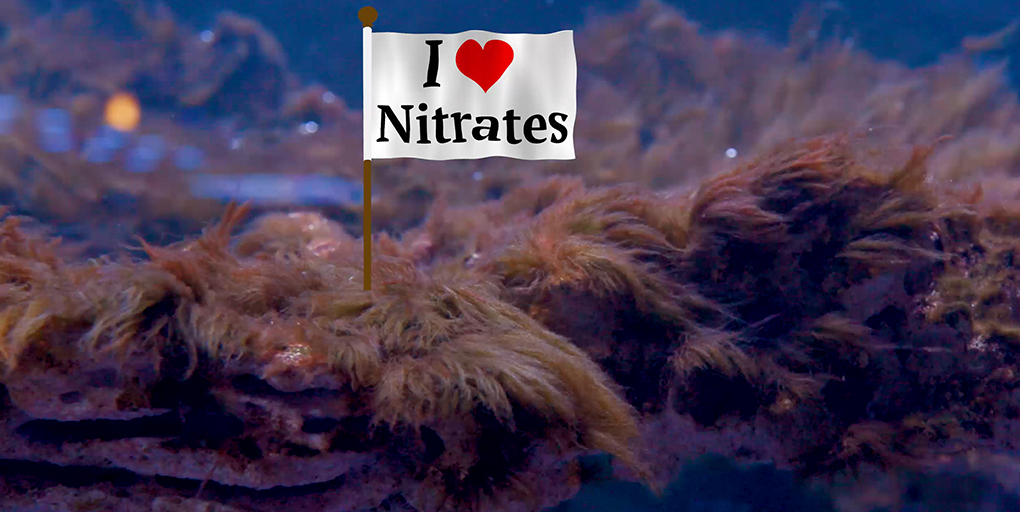
Your nutrients, ie.) nitrates, being too high can cause algae blooms of some very undesirable algae. Remember when I mentioned not to add corals to a tank right away because algae loves nitrates, yeah I wasn’t kidding. The reason that algae blooms commonly happen during the cycling process is because, not only are there lots of nutrients coming into your tank, but there isn’t a set structure.
Kind of like how you would picture the wild west. Endless opportunity and no one to stop you. Well the algae is the pioneer in this analogy. That algae is going to take over all the space it can until something slows it down.
However, even after you wait for things to settle down in the algae department before adding your corals to your tank, algae blooms can happen any time. So if you find yourself experiencing algae in the hair or film variety, try and do a water change and see what happens because more often than not it’s just because your tank’s nitrate levels are too high, and when in doubt, some good, old fashioned elbow grease never hurt anyone.
2. Nutrients are too low
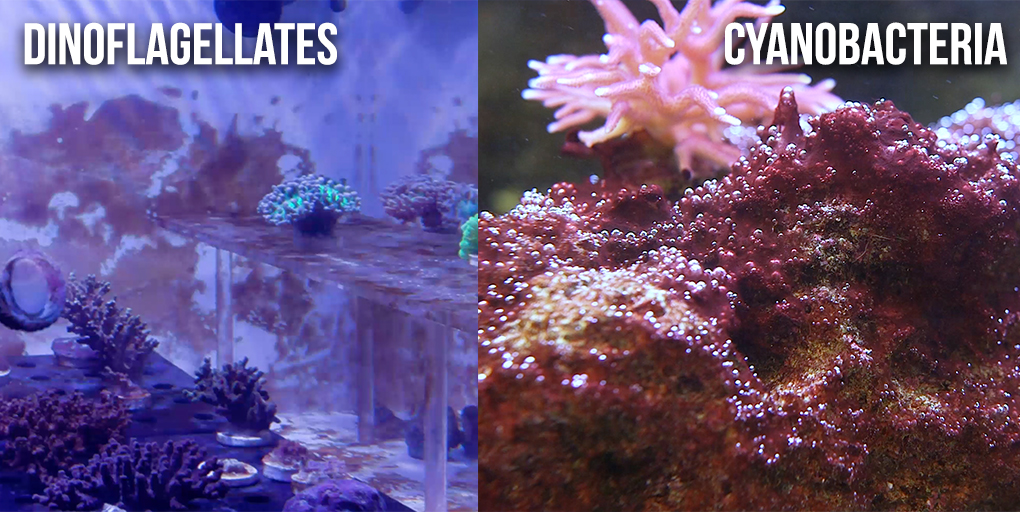
Now on the flip side of things, bad organisms can also come from your nutrients being low. Dinoflagellates are one example of organisms that thrive in low nutrient conditions.
Dinoflagellates look this weird mucus substance that coats everything, and it can be pretty harmful to your tank if you let it get out of control.
Another organism that thrives in low nutrient conditions is cyanobacteria. That’s the pink stuff you may have seen growing on the rock in your tank. This isn’t that harmful to your tank, however it may annoy your corals if you let it get out of hand.
So how did the nutrients get too low? You may have been either doing too many water changes, put too much macro algae in your refugium and they ate up a lot of the nutrients, your chemical filtration like GFO is overstepping the water, or you just haven’t been feeding enough.
Now how do you get rid of these? I look at it as a two step solution. First, is to fix the underlying chemical issue. The nutrients are just too low so increase your feeding slightly to kickstart that nutrient flow again. Second is to eliminate as much of the dinoflagellates and Cyanobacteria as possible. Here we try to scrape and siphon away as much as we can, and consider adding a UV sterilizer. They’ve done wonders for us here in keeping our tanks crystal clear.
3. Mistaking cycle placement
Another common problem that can arise when cycling is not being completely sure where in the cycle you are. The whole process sounds so linear ON PAPER, but in practice there can be stops and stutters.
For example, we unknowingly put a lot of coral in danger because we didn’t double check our cycle. The nitrate levels were pretty low in the tank so we figured the cycle was fully complete and it was a good time to start adding corals into the tank. Well what we didn’t take into account was, what if the nitrates levels were low because they didn’t have a chance to get high yet, meaning the nitrate portion of the cycle was just starting.
So with the addition of the corals, as well as the food we were feeding them, this kickstarted the ammonia levels and since there weren’t enough bacteria in the system yet, the toxins really did a number on our corals. The best way to avoid this disaster? Double check your cycle…
4. Trying to cycle with fish and corals present
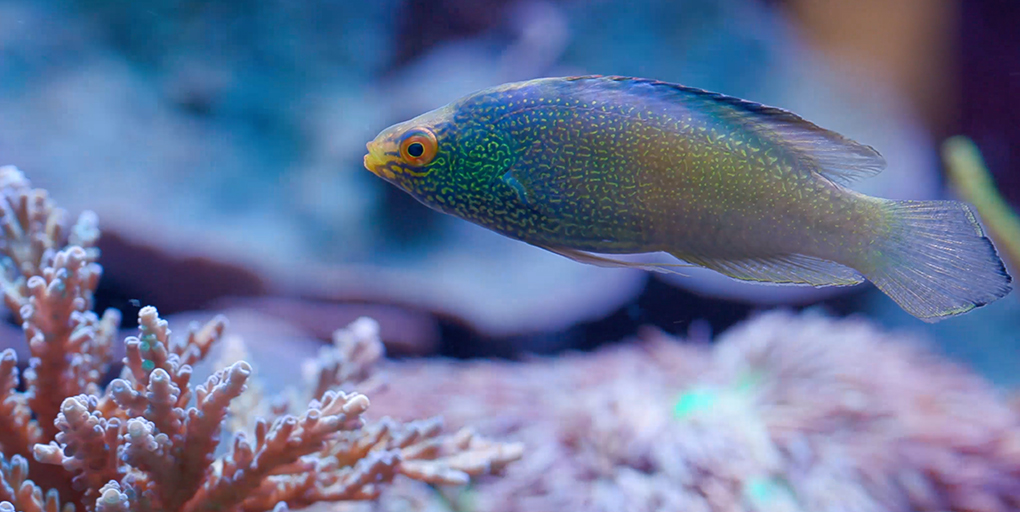
This was something that was kind of the norm back in the day, but we have since realized this was really unnecessary and just put animals at risk. Believe me you’re better off just waiting to get your fish and coral until after the cycle is finished, they will be a lot healthier and happier that way.
Remember at the start of the video when I said this process takes 6ish weeks? And then remember when I said Ammonia and Nitrites are incredibly toxic to fish? Exactly. A very tough fish can survive the cycle but that cycle would progress with or without that fish being there.
5. Never testing your tank
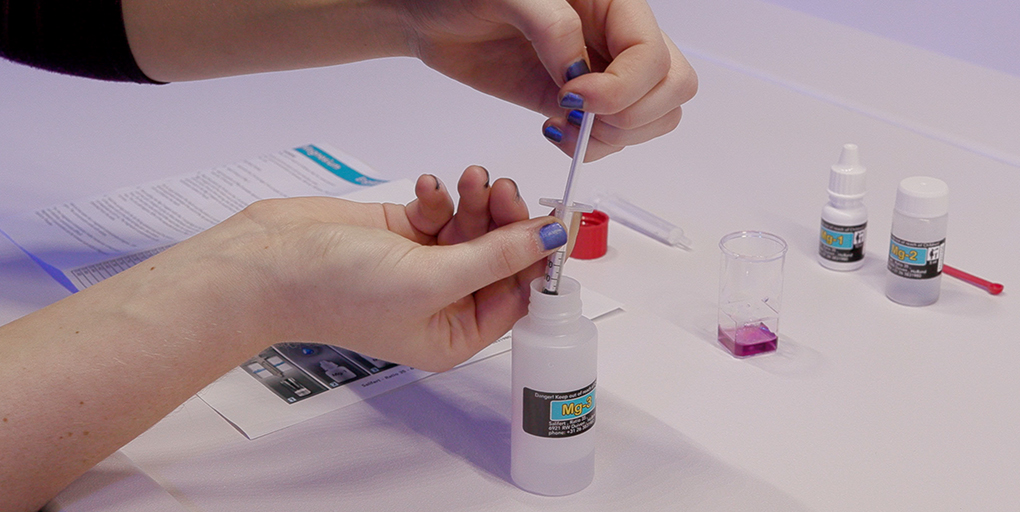
The last issue that a lot of people face is the mindset of “my tank is finally cycled, now it will stay cycled and I will never have to test it again unless I see an issue”. That's something we like to call "wrong".
Make it a habit to regularly test your parameters to avoid problems all together, and not just test to troubleshoot a problem you finally noticed. A lot of the time most problems have done quite a bit of damage if you’re just noticing them with the naked eye. If you work on making it a habit now, it’ll become second nature to you down the road.
Alright everyone, that’s it on the Nitrogen Cycle, I hope you learned a little something from it. Remember; test your parameters, cycling a tank is essentially just nitrification, talk to your fish, don't drink the saltwater, and as always, Happy Reefing.
